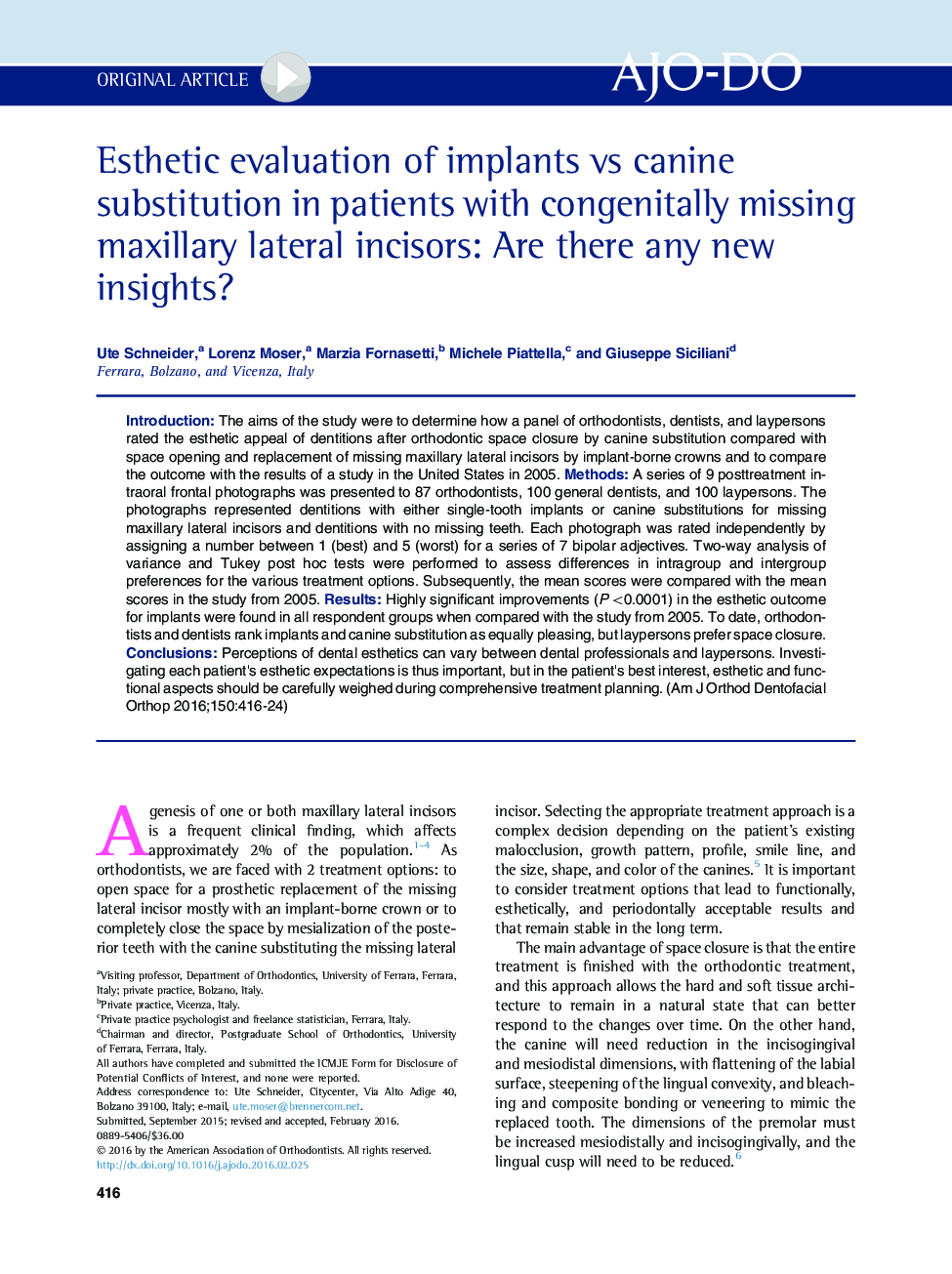| Article ID | Journal | Published Year | Pages | File Type |
|---|---|---|---|---|
| 3115222 | American Journal of Orthodontics and Dentofacial Orthopedics | 2016 | 9 Pages |
•Esthetics of implants for congenitally missing maxillary lateral incisors has improved.•Laypersons prefer canine substitution.•Dental professionals judge implant-borne crowns equivalent to canine substitution.•Dental professionals should identify and manage patients' expectations.•Careful weighing of esthetic and functional demands during treatment planning is important.
IntroductionThe aims of the study were to determine how a panel of orthodontists, dentists, and laypersons rated the esthetic appeal of dentitions after orthodontic space closure by canine substitution compared with space opening and replacement of missing maxillary lateral incisors by implant-borne crowns and to compare the outcome with the results of a study in the United States in 2005.MethodsA series of 9 posttreatment intraoral frontal photographs was presented to 87 orthodontists, 100 general dentists, and 100 laypersons. The photographs represented dentitions with either single-tooth implants or canine substitutions for missing maxillary lateral incisors and dentitions with no missing teeth. Each photograph was rated independently by assigning a number between 1 (best) and 5 (worst) for a series of 7 bipolar adjectives. Two-way analysis of variance and Tukey post hoc tests were performed to assess differences in intragroup and intergroup preferences for the various treatment options. Subsequently, the mean scores were compared with the mean scores in the study from 2005.ResultsHighly significant improvements (P <0.0001) in the esthetic outcome for implants were found in all respondent groups when compared with the study from 2005. To date, orthodontists and dentists rank implants and canine substitution as equally pleasing, but laypersons prefer space closure.ConclusionsPerceptions of dental esthetics can vary between dental professionals and laypersons. Investigating each patient's esthetic expectations is thus important, but in the patient's best interest, esthetic and functional aspects should be carefully weighed during comprehensive treatment planning.
